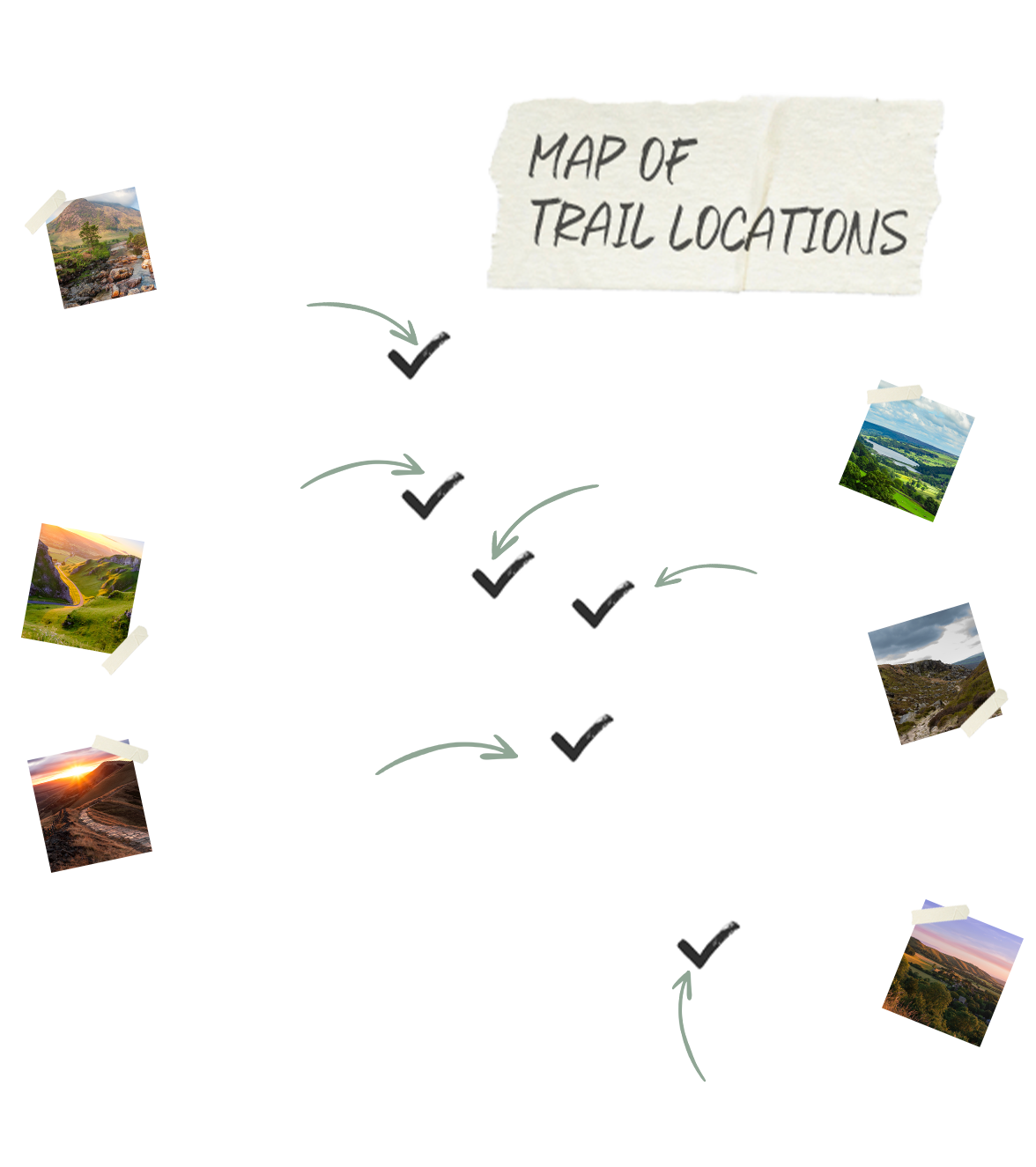

Trail running is fun, fast paced, and you can do it just about anywhere! You don’t have to run up fells and across mountain ridges to be a trail runner, but you can if you want to. Whether you will be running laps in your local park or along secluded forest paths, it’s time to lace your shoes and hit the trails. Let’s get going!
Our beginner’s guide to trail running has everything you need to know to give trail running a go. Whether you are new to trail running or just want to brush up on your knowledge, you’ve come to the right place. Scroll down the page or click on the links below to go straight to the part you’re interested in.
Jump to section:
Introduction to trail running and its benefits
Trail running shoes, clothing, and equipment
Basic trail running skills
How to warm up and cool down for trail running
The best places to trail run in the UK.
Introduction to trail running and its benefits
“Trail Running is about stretching your legs in the Great Outdoors, enjoying the views, discovering new places and soaking up the tranquillity”
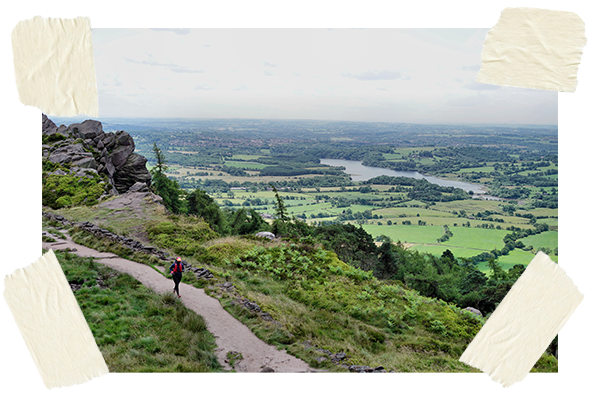
What is the difference between Trail Running and Road Running?
Trail and road running are very similar, but incredibly different in the same breath. Road running involves a repetitive movement on a consistent, paved surface, while trail runners run on a broad mix of terrain, often purposely avoiding tarmac. To trail run, you’ll need to stay focused to navigate your route over rocks, gravel, grass, and mud. It means trail runners are constantly adjusting their balance and stride length and totally absorbed in their run. And don’t forget the climbs! Ascents and descents can be long and challenging off the beaten track!
The physical demands of road and trail running are different, but the biggest variation is psychological. Often, road running is about smashing personal bests, and even if you’re not racing the stop clock, you’ll be dodging pedestrians and waiting at crossings. By contrast, Trail Running is about stretching your legs in the great outdoors, enjoying the views, discovering new places and soaking up the tranquillity. Long days on the trails are an opportunity to clear your head and simply enjoy putting one foot in front of the other.
That’s not to say there isn’t a competitive side to trail running, there certainly is, but there’s no need to book your spot in the Ultra Trail du Mont Blanc just yet.
Trail running shoes, clothing, and equipment
You don’t need to buy fancy new trail running shoes and running clobber to go trail running. If you need to start your trail running journey without new gear, that’s fine. As with all sports, if you want to squeeze the maximum enjoyment out of trail running, then investing in new equipment is well worth the expense.
What am I looking for in Trail Running shoes?
A good pair of Trail Running shoes is the most important item of running gear. A shoe that fits comfortably, that performs in a mix of off-road conditions and protects your feet from injury is what you’re after.

Here’s our trail running shoe checklist:
#1 - Grippy outsole - Trail running shoes have very grippy outsoles with deep lugs which are designed to hold firm on slippery and loose surfaces and shed mud. Outsoles are made from specially formulated rubber compounds such as ubiquitous Vibram and Inov-8's Graphene Grip.
#2 - Plenty of cushioning - Running is a high-impact sport. Unless your feet are well cushioned with shock absorbing materials, the repeated impact on your legs can lead to injuries, like bruised heels and shin splints.
#3 - An average drop - The difference in midsole thickness from the heel to the toe is called the “drop”. Unless you have a preference, don’t worry too much about the heel-to-toe-drop, just aim for a drop from 3 to 7mm. A larger drop is typically recommended for runners with a heel-heavy running style or for road running.
#4 - High energy return - Modern running shoes not only absorb shock, but they also return energy to a runner’s stride giving the shoe a bouncy, more energized feeling.
#5 - Stiffer midsole - The flex of a trail running shoe is stiffer than a road running shoe. This is because while road runners spend most of their time rolling their foot from heel to toe, trail runners spend more time on the balls of their feet navigating inclines and mixed surfaces. A firmer flexing sole offers more support to the foot and is better able to mitigate uneven surfaces.
#6 - Waterproof liners - A misplaced stride is all it takes to turn a dry foot wet. On short summer runs, wet feet are an annoyance. On long runs or in the winter wet feet can cause discomfort, blisters and worse. For all season running, shoes with a waterproof liner/membrane are worth the small premium.
#7 - Trail protection - Trail running shoes are more rugged than road running shoes to protect your feet and to ensure they don’t fall apart on you.
Sandwiched between the cushioning midsole and grippy outsole, a “Rock Plate” is a plastic or composite plate that prevents sharp objects from damaging your feet or piercing the midsole. Toe guards are like a micro rand, often made with a TPU-like material that offers a little extra protection against toe-stubs and reduces wear and tear from abrasion.
Why can't I trail run in normal running shoes?
While you can trail run in road shoes, for all the reasons listed above a trail running shoe will be more adept for off-road surfaces. If you’re just getting into the sport or cannot justify the expense of a trail running shoe at this moment in time, road shoes will be okay - the main thing is that you’re running! Just take extra care.
Should I use specialist insoles in my trail running shoes?
A quality trail running shoe should have sufficient padding and doesn't require an insole. However, for runners that need additional arch support, or who overpronate or supinate, an Orthopaedic insole, from brands such as Super Feet and Sorbothane, can be a worthwhile addition.
Socks need to do more than match your outfit!
Often overlooked, running socks are an important consideration for making sure your feet are comfortable and kept in tip-top condition through the running season. There are infinite options; a merino wool or polyester running sock from brands like Bridgedale and Hilly are perfect for summer runs. In the winter, if you are not running in a GORE-TEX® shoe, a waterproof sock from Sealskinz offers welcome relief from puddles and bogs.
How do I clean my trail running shoes?
You don’t need to do or buy anything fancy to clean trail running shoes. A bucket of warm water and a scrubbing brush should do the trick. When drying them, remove the insoles, loosen the laces and pack them with newspaper. As with all performance footwear, dry them in a warm room, but not on a radiator. If the shoes are beginning to pong, use an anti-odour spray or some good old-fashioned baking soda to remove the smell. Reproofing sprays by brands like Nikwax and Grangers, designed specifically for synthetic footwear, can be used to treat GORE-TEX shoes.
What clothes should I wear for trail running?
Technical layering is the key to comfortable trail running! Add layers when you’re cold, peel them off as you start to sweat. The layering system consists of three parts; base layers, mid layers, and outerwear. Each has a unique job to do and should be selected carefully.

Base layers
Made from a sweat-wicking fabric, base layers keep you dry and comfortable whilst exercising by transporting perspiration away from your body to the outside of the garment where it can evaporate.
Mid Layers
This is the heat-generating part of the layering system. A lightweight mid-layer made from a micro-fleece fabric will feel unrestrictive and slip beneath a waterproof to add warmth. A half or full zip allows cooling air to flow in. Thumb loops prevent the sleeves from riding up and a close-fitting hood is handy if the mercury plummets.
Waterproof jacket
You never know when the weather might turn. Wear or pack a lightweight jacket designed for running or fastpacking to protect yourself from wind and rain. 3-layer and 2.5-layer fabrics do not have a liner and therefore they do not feel clingy when you’re hot and bothered. The jacket should be waterproof to at least 10,000mm and extremely breathable. We recommend a full-length zip which can be opened to vent off some steam. Pit-zips are a handy way to cool down in torrential rain.
Leggings/Shorts
Fit is the most vital criteria of your chosen legwear. A lightweight, quick drying synthetic fabric and the absence of seams that could rub and cause discomfort are essential. Zip close pockets are handy, but not essential if you run with a pack.
“Choose multiple lightweight layers so you can fine-tune your temperature mid-run. This way you won’t have the “too hot or too cold conundrum”
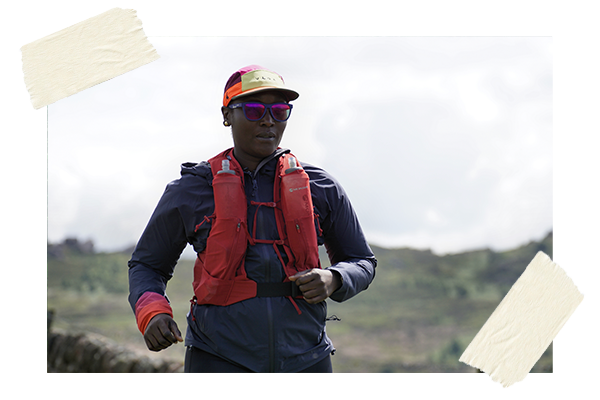
Is there any clothing I should avoid for running?
Avoid cotton at all costs. Cotton retains water, leaving you cold and damp. Instead, opt for technical synthetic fibres, like Polyester, or merino wool, a natural super-fibre with amazing wicking, insulating and anti-stink properties.
Stay clear of heavily insulated clothing for running. Once you’re running you will be generating a lot of body heat. A heavily insulated jacket isn’t only unnecessary, it is much less packable and will soon become burdensome. Instead, choose multiple lightweight layers so you can fine-tune your temperature mid-run.
Water– To stay hydrated a runner needs to drink between 200 and 400ml of water every 30 minutes. A hydration reservoir with a drinking hose or soft flasks which slot into a backpack, are the easiest way of carrying water. Solid water bottles are handy for shorter runs but are impractical for longer runs. Add rehydration salts/electrolytes to your water for better hydration.
Snacks & Gels– You’ll burn through plenty of calories on the trail so it’s important to pack plenty of high energy snacks and bars to keep you going. Snacks with slow-releasing carbohydrates, such as oats, are perfect for sustaining energy levels over long periods of time. When a big boost of energy is needed opt for a high glucose product like gels.
Sunglasses– Protect your eyes and stop yourself from squinting all while looking ice cool.
A Cap– Keep the sun off your dome with headwear that’s UV protective, lightweight, breathable, and waterproof.
Mobile Phone– When running alone it’s particularly important to carry a mobile phone in case of emergencies. Make sure it has enough charge. It’s also great for grabbing some pictures while out on the trail.
OS Maps– Good old-fashioned route finding in case you lose your way or your phone dies. For large expanses of unfamiliar wilderness, a compass could prove useful to find your bearings too.
Headtorch & Hi-Vis clothing– In the winter, when the nights draw-in early you might need to illuminate your path and bring attention to yourself so that drivers can see you. Lightweight and handsfree, headtorches are an obvious choice for runners. Wear a clip-on light, reflective arm and leg bands, or fluorescent, dayglo clothing to ensure you are seen.
Running Watches– Pair your watch to a smartphone to analyse your vitals and performance and evolve future training plans. Get into the nitty gritty of your running data or just use your watch to control your running playlist.
Our tip, keep your belongings light, the less stuff you carry the easier it is to run!
Yes, you will need a backpack for all that gear!
Running packs come in all shapes and sizes, from 1 litre hip packs to 30 litre multi-day backpacks. For daytrips a pack volume between 5 and 15L is enough to carry everything you will need. Look out for a form-hugging, ergonomic shape and wide shoulder and hip straps. These allow the pack to be secured to your body, so it doesn’t bounce or shift around when running. Also, it reduces the risk of pressure points that could rub, making the pack uncomfortable on long runs. A flexible sternum strap will secure the pack without restricting breathing. On-hand zip pockets at the front of the vest/pack make it easy to access items like your phone and energy gels mid-run.
Use a hydration reservoir (Camelbak) compatible pack with a hose and bite valve to quench thirst on the move. Alternatively, many running vest packs, like the Montane Gecko, have mesh pockets on the shoulder straps for holding soft flasks. If the pack has compression straps or webbing this can be used to compact the contents, so it doesn’t move about. Our tip – although running packs are adjustable, a good fit is essential, take care when selecting a size online, or try one instore to make sure it’s comfortable.
Trail Running Techniques and Training
Trail running isn't just one foot forward, followed by the other, it requires some technique. In this section we’ll explain some techniques that will help you to master the art of trail running – but don’t worry, it’s not that complicated!
Use a short and soft stride and increase your cadence.
Running cadence is the number of strides per minute (SPM) a person takes while running. When trail running, this number should be kept high – you are aiming for around 170 steps per minute. Of course, there isn’t a perfect number, but increasing your running cadence will enable you to perform better on the trails! Shorter strides, placing your feet beneath your body, enable quicker reactions to a changing surface, allowing you to run faster and waste less energy!
The higher your cadence, the softer your strides will be. With softer strides you are less likely to injure yourself because the impact on joints and bones is reduced.
TOP TIP: Calculating your Running Cadence
Count the number of times your left foot hits the ground in 30 seconds; double it to get the total for 60 seconds; then double it again to get the total for both feet.
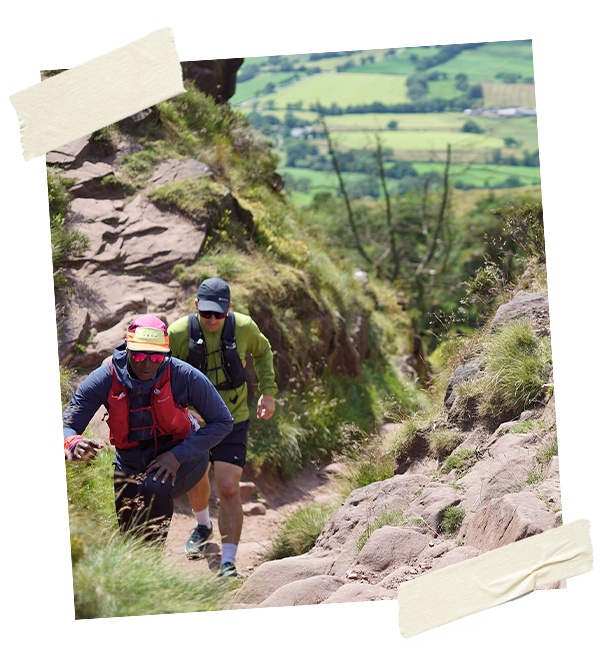
Look ahead, focus and flow along the trail.
Trails can be uneven, rocky and muddy - knowing what lies ahead is vital! Ensuring you’re always looking a few strides ahead on the trail means you can see the upcoming obstacles and plan your foot placement.
As your confidence grows, aim to look further ahead on the trail. Start by looking 2-3 meters ahead and increase the distance as it becomes familiar.
Know when to swing your arms.
On the trail, your arms have two jobs: Swinging your arms as you stride provides rhythm and forwards momentum: Outstretched arms aid balance.
It has been scientifically proven that a good rhythmic arm swing can help to save 3-13% energy expenditure! On a tough climb, swinging your arms will help you to drive up the incline.
But during descents and on technical trails, when just staying on your feet is more important than efficiency gains, your arms should be by your side helping you to balance.
So, ensure when you’re running that you use your arms too, especially on the inclines!
When ascending: If the terrain is getting steeper, further shorten your stride, take small, frequent steps. If it’s too steep, walk! There is no shame in walking or hiking as a part of your route.
When descending: It’s import we get down the hill safely, and to do this we need to ensure maximum concentration. Focus on where your feet are going, look ahead and take it easy. If you don’t feel confident, try slowing down until you build confidence with practice! Run on the balls of your feet, heavy heel-first landings can cause injury.
Getting into nature and escaping the hustle and bustle of urban living is what Trail Running is all about, but heading out into unfamiliar surroundings without a plan is a bad idea. Plan you route, check the weather, pack the clothing you need to stay comfortable; you’ll need water and high-energy foods too. Be prepared and most importantly, don't bite off more than you can chew. Extending your range safely and comfortably will take time, enjoy the process and build up to the epic bucket list runs! Run with a pal, or if you’re heading out alone, let somebody know where you are running and when you’ll be back.
How can I train for trail running?
To increase stamina for trail running there’s no better training than running. Supplementing running with highly aerobic, but lower impact sports such as cycling, swimming, and rowing, essentially cross-training, is a great way to improve fitness and reduce the likelihood of niggling injuries.
Being consistent is a trail running fundamental. Run regularly, pace yourself and build your fitness gradually. Running watches from brands like Garmin are a handy, almost weightless way of tracking your progress. The most sophisticated watches even provide recommendations for recovery time post-run. Alternatively, you can try downloading a running app (i.e. Strava, All Trails, Nike Run Club and Runkeeper) which will help you to improve your distance, track your progress and plan your routes! Technology isn’t a necessity, but seeing evidence of your improvements is incredibly motivating and GPS navigation will save you more than a few wrong turns.
How to warm up and cool down for trail running
Never forget to warm-up before heading out on a run! Warming up gets the blood pumping and reduces the risk of injuries, by loosening joints and improving blood flow to muscles. Your routine should be dynamic, combining stretches with plenty of movement. Short repetitions of stretching movement like butt kicks, leg rolls, high knees and shoulder rolls performed while lightly jogging is just the ticket. Our advice - spend 10-15 minutes warming up before trail running, incorporating all your joints and muscles. It might not be the most exciting part of your day, but you won’t regret it.
Warming up gets the blood pumping and reduces the risk of injuries, by loosening joints and improving blood flow to muscles. Your routine should be dynamic, combining stretches with plenty of movement. Short repetitions of stretching movement like butt kicks, leg rolls, high knees and shoulder rolls performed while lightly jogging is just the ticket. Our advice - spend 10-15 minutes warming up before trail running, incorporating all your joints and muscles. It might not be the most exciting part of your day, but you won’t regret it.
Once your run has ended, be sure to cool down. Your cooling down routine should incorporate static stretches, i.e. stretching a muscle and holding it for a good amount of time, then letting it relax. The aim here is to improve flexibility and prevent (or relieve) you muscles from cramping.
The majority of running injuries result from these three aspects of your form: heel striking, over-striding, and running cadence. Improving your running cadence can lessen your chances of injury!
If you do get injured, don’t panic, it happens. Seek advice from a professional, like a sport physiotherapist, take plenty of rest, and don’t take short cuts. Recovery takes time, allow your body to heal - Running on an injury too early can worsen the injury and set you back even further.
The Best Trail Runs in the UK
The Yorkshire Dales - Lofthouse, Dale Edge, Scar House, Middlesmoor
This is a varied and beautiful mini tour of upper Nidderdale. The run is mostly on well-trodden tracks, and you're treated to plenty of views with this little gem of a route.
Once the climb from Lofthouse is done (don't forget to look back down for views down the valley) you are let loose across a runnable moorland path where you can steal glimpses of what lies ahead. A little section of tarmac will see you across Scar House Reservoir and then a short climb back up the other side of the valley leads you to a lovely little downhill section into Middlesmoor. From here, it's just down the hill back to Lofthouse.
The route benefits from being, for the most part, on the Nidderdale Way, so it is well signed with finger posts.
Distance: 9 miles / 14.5 km
Elevation: 1,400 ft / 425 m
The Runner: Sarah Perry is an inov-8 athlete and ultra-runner, countryside lover and acorn chaser (slowly ticking off the national trails). In her own words, she spends “way too much time running in the hills with her dog”.
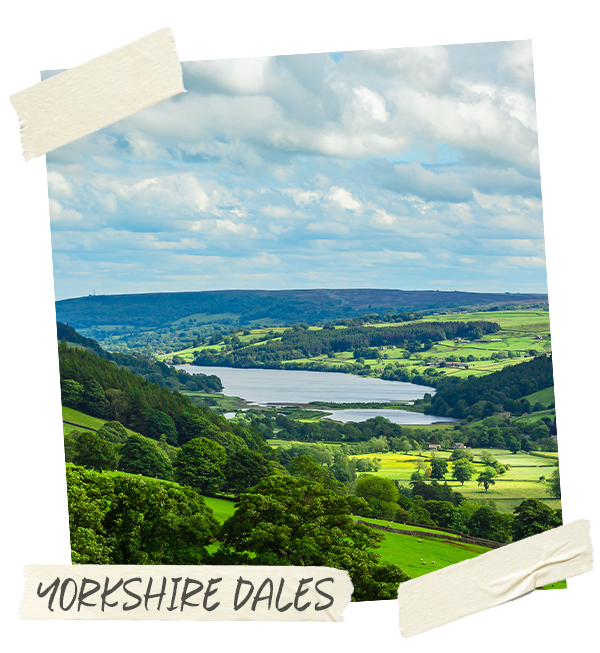
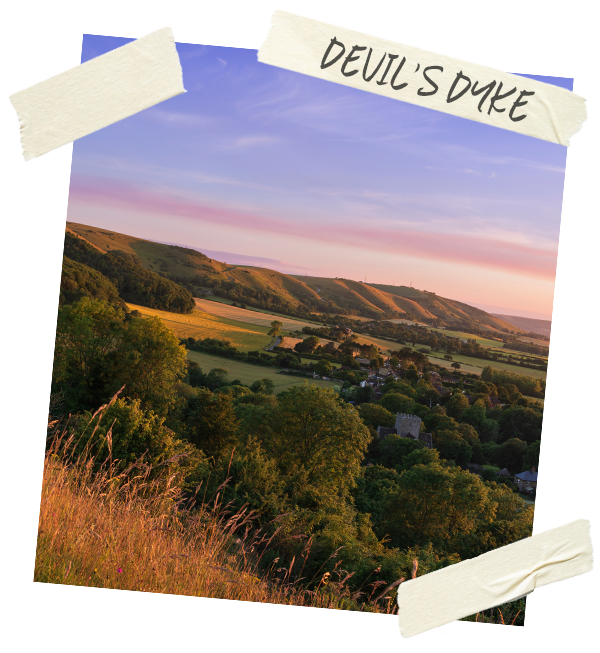
The South Downs – Hassocks, West Sussex to Devil’s Dyke
The journey takes you through Hassocks, West Wooly Bridle Way, Devil’s Dyke Southern Bridleway to Perching Hill onto Edburton Hill, Devil’s decent and the South Downs Way. The terrain is a real mix offering incredible scenery throughout the run. There are jaw-dropping views at the summit of Devil’s Dyke and some technical section on the climb where you need to just take your time. It’s not for the faint hearted, there are some really steep hills which I always walk. Trail shoes are a must on this run – the terrain varies constantly and includes steep gradients, grassy trails, woodland dirt and plenty of mud if it has been raining. I love this run in the morning.
Distance: 21 miles / 34 km
Elevation: 3,520 ft / 1,070 m
The Runner: Merrell ambassador Trina Dawkins is a trail runner and blogger living in East London. She loves to venture outside of London to explore new trails and shares her adventures to inspire others to get outdoors and move.
The Peak District - Mam Tor's Great Ridge, Hope Valley
Seek out pure adventure as you embrace the challenge of Mam Tor's Great Ridge. Starting from the charming village of Edale, embark on a captivating journey that leads you through the windswept beauty of Windy Knoll and Winnats Pass. Venture into the historic and picturesque village of Castleton, where you can savour well-deserved refreshments before ascending Lose Hill. The stunning run along the Great Ridge, featuring Hollins Cross and the majestic Mam Tor, will leave you spellbound. Conclude your journey with a triumphant return to Edale via Rushup Edge and Lord's Seat, adding another unforgettable trail running achievement to your UK bucket list.
Distance: 14 miles / 22.4km
The Runner: Rachel Murphey is a certified UESCA Ultra Running Coach. Through her company “She Runs Outdoors”, Rachel offers guided trail runs, weekend running escapes and coaching across the UK. Rachel is a Salomon ambassador.
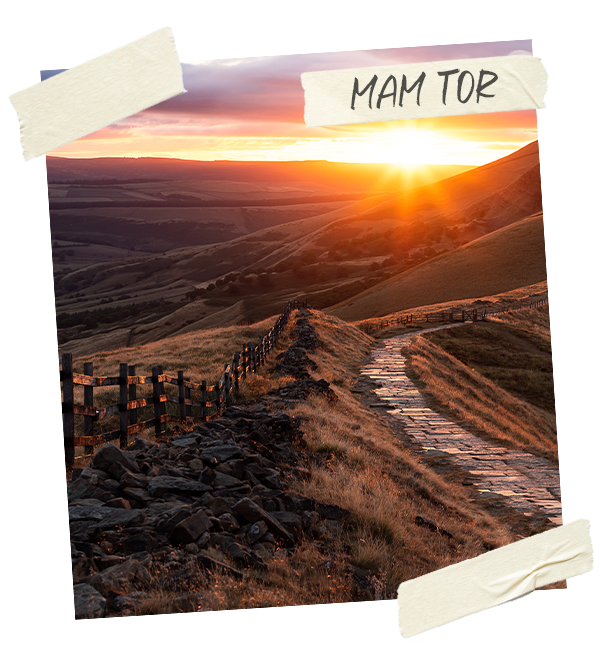
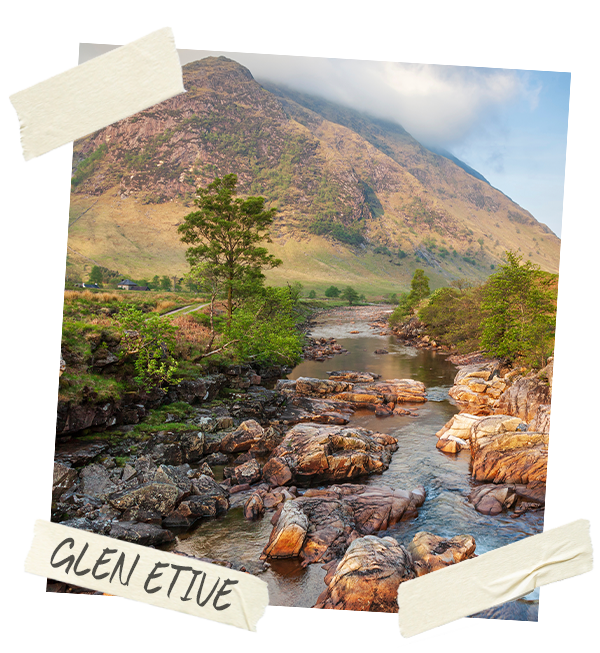
The Scottish Highlands - Ben Starav, Glen Etive
As you make your way from the road in the valley the path climbs steeply up the ridge of Ben Starav providing an instant vista both up and down the beautiful Glen. The terrain under foot gets rockier towards the summit but always on good path. After you have admired the view from the summit the real fun begins with a stunning ridge as you move towards Glas Bheinn Mhor that you can choose to either walk on the top of or take the easy path to the side if your head for heights isn’t quite there yet. The descent down the valley is flowing and fast and before you know it you will be back to your car exhilarated and with happy tired hill legs. A huge ascent that’s best tackled in late Spring/early Summer.
Distance: 10.4 miles / 16.7km
Elevation: 1500m+ / 5,000+ ft
The Runner: Andy Berry is the current Lake District 24-hour record holder and Lakeland 100 winner 2023. Andy loves to move in the mountains and help others in their running goals through his coaching company Andy Berry Coaching. Andy is an ambassador for Inov-8.
The Lake District – Fairfield Horseshoe, Rydal
The Fairfield Horseshoe is a Lakeland classic, providing endless vistas and panoramas that just get better as you climb higher. The ache in your legs will soon be forgotten when you're eating your favourite snack atop the summit of Fairfield, admiring the glistening Windermere in the valley below. The Fairfield Horseshoe provides it all; steep climbs on well-trodden paths, ridgeline running, rocky outcrops, and some fun descending! Starting and finishing in Rydal, after a few hours in the fells, you can treat yourself to a well-earned meal in one of neighbouring Ambleside's many eateries.
Distance: 10.3 miles / 16.5 km
Elevation: 875 m / 2,870 ft
The Runner: Yorkshire girl Hannah Cairns is a competitive fell runner, Salomon ambassador and outdoors super fan. In addition to racing most weekends, Hannah is only a handful of Wainrights away from running all 214.
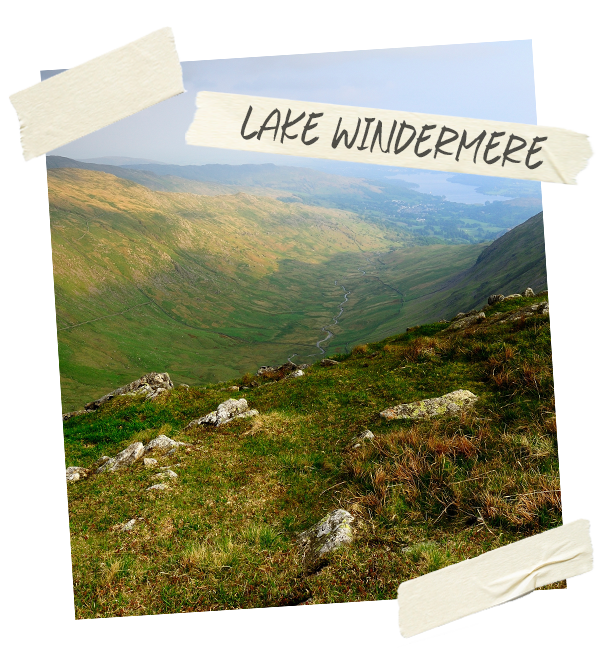

The Yorkshire Dales - Ilkley Skyline
This is a fantastic circular route starting and finishing at a lovely pub called the Hermit. The 3-4 hours dash (depending on conditions) includes a bit of everything, from fast gravel tracks to endless sections of bog, steady hills with incredible views over the Wharfe valley, and nice technical descents. You're never too far away from civilization, but you could be a million miles from anywhere at points. Pick a nice dry winters day and this route is hard to beat. The legendary loop, only a stone’s throw from the Bradford satellite towns of Shipley, Otley and Bingley, encompasses Beamsley Beacon, Round Hill, Burley Moor, Ilkley Moor and Rombalds Moor.
Distance: 21.8 miles / 35km
Elevation: 890m / 2,920ft
The Runner: Inov-8 ambassador Tom Adams is a well-seasoned fell, trail and mountain runner from Yorkshire. Tom runs with the Ilkley Harriers. His recent race results include a win at the Scafell Pike Trail Marathon – a 26-mile race to the top of England’s highest mountain and back – which he ran in just 3hrs 32mins.
GO Outdoors Help
Sorry to hear that you are having an issue. For us to help you further please quote the following to our customer care team.
